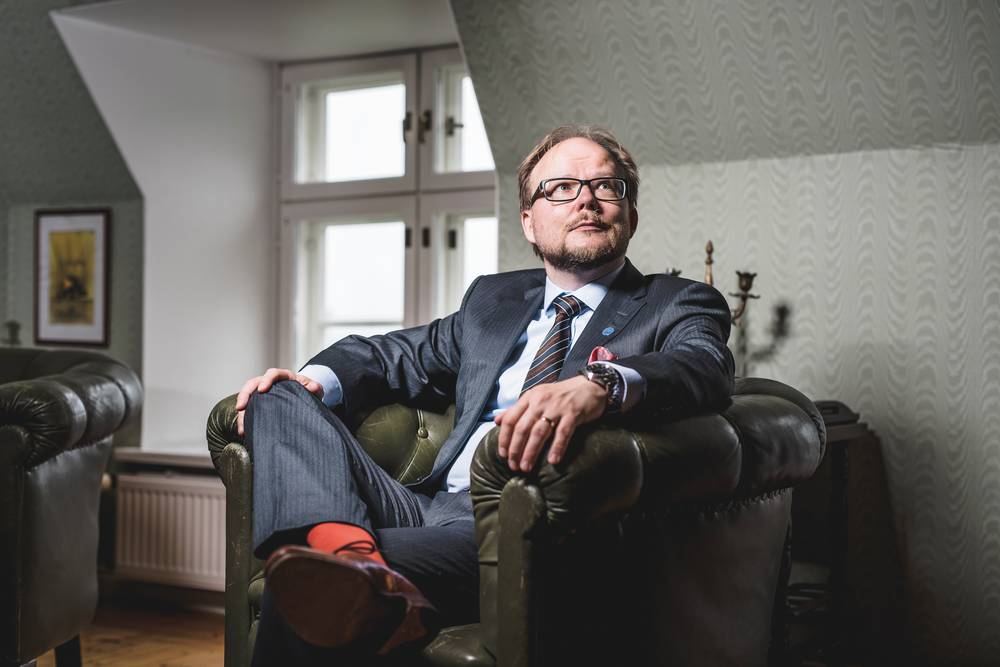The road to carbon-neutral energy production is paved with new technologies that will optimise production. Opportunities to benefit from resource efficiency and the circular economy are available. The Managing Director of Nevel, Markus Hassinen, provides his insights on collaboration opportunities.
Hassinen is in the perfect position to observe the major changes taking place in the energy sector. While these changes present challenges, he believes they also present an opportunity to reshape infrastructure solutions.
“We’ve been preparing for these upcoming changes and looking for ways to optimise energy production,” he says. “Our goal is to be our customers’ number one partner in market transformation.”
Among other things, this means making use of advanced production models, such as remote operation of power plant assets. According to Hassinen, benefits gained from digitalisation of the energy production in Finland alone may amount to 80 million euros in annual savings, a huge opportunity to improve the competitiveness of the energy sector without investments.
“It’s mostly about leadership and making things happen, because we already have the required technology. We can boost efficiency and look into solutions based on customers´ individual situation.” Nevel has been pioneering the digitalisation of solid fuel fired power plants since 2015 with its central control room concept. The central control room concept enables remote operation of tens of power and heating plants in Finland and Sweden.
The circular economy presents new opportunities
Finding ways to benefit from the opportunities offered by the circular economy is fascinating. We’re now seeing how the energy, material and information cycles between energy producers, industries, municipalities and households are becoming more efficient and connected. A great example of this can be found in Utajärvi, Finland, where a local oat mill, Kinnusen Mylly, the municipality of Utajärvi and Nevel have jointly developed an efficient way to benefit from various cross-sector opportunities while also producing carbon-neutral energy.
Nevel’s new heat plant will produce energy for the local oat mill and a nearby feed mill as well as district heating for the municipality of Utajärvi. All the energy is produced from oat hulls recovered during milling. This creates a local circular economy supply chain. The positive effects are boosted by short delivery distances of only a few dozen metres, which allow for savings on delivery costs and further reduce emissions.
“There are plenty of these types of cross-sector opportunities, in which combining modern technology with high level automation and machine learning can give us results that benefit all parties. There are lots of other opportunities that we can find and start working on together,” says Hassinen.
Change must be driven with care
The biggest driver for change in the energy sector is the shift towards carbon-neutral energy production. In Finland, the use of coal in energy production will end in 2030 and the Finnish government has set a goal to halve energy peat consumption in the same timeframe. In addition, the government has decided to gradually remove energy tax refunds from energy-intensive industries. This will reduce the use of coal, natural gas and energy peat in various industries.
“These policy changes mean two things. In the short term, fossil fuels will be replaced, first and foremost with biofuels. In particular, the demand for wood chips will increase. At the same time, the costs of producing energy may well increase,” Hassinen sums up.
According to Hassinen, it is vital to drive this change with care. If not, the pressure to supply wood chips will be multiplied, which will be reflected in rising costs for various industries, municipalities and society as a whole.
“In a well-managed change, energy peat plays a role as the transition fuel towards carbon neutral future. This is also acknowledged in the government programme, which allows peat usage to continue until the end of the 2030s. The programme also states that energy peat is to be used as a reserve fuel for ensuring the energy supply. Furthermore, it states that peat may be used as substrate and litter and for new applications, such as the production of activated charcoal. These policy definitions bring flexibility for our customers. We are ready and willing to plan and prepare for the transition together with our customers”, concludes Hassinen.

